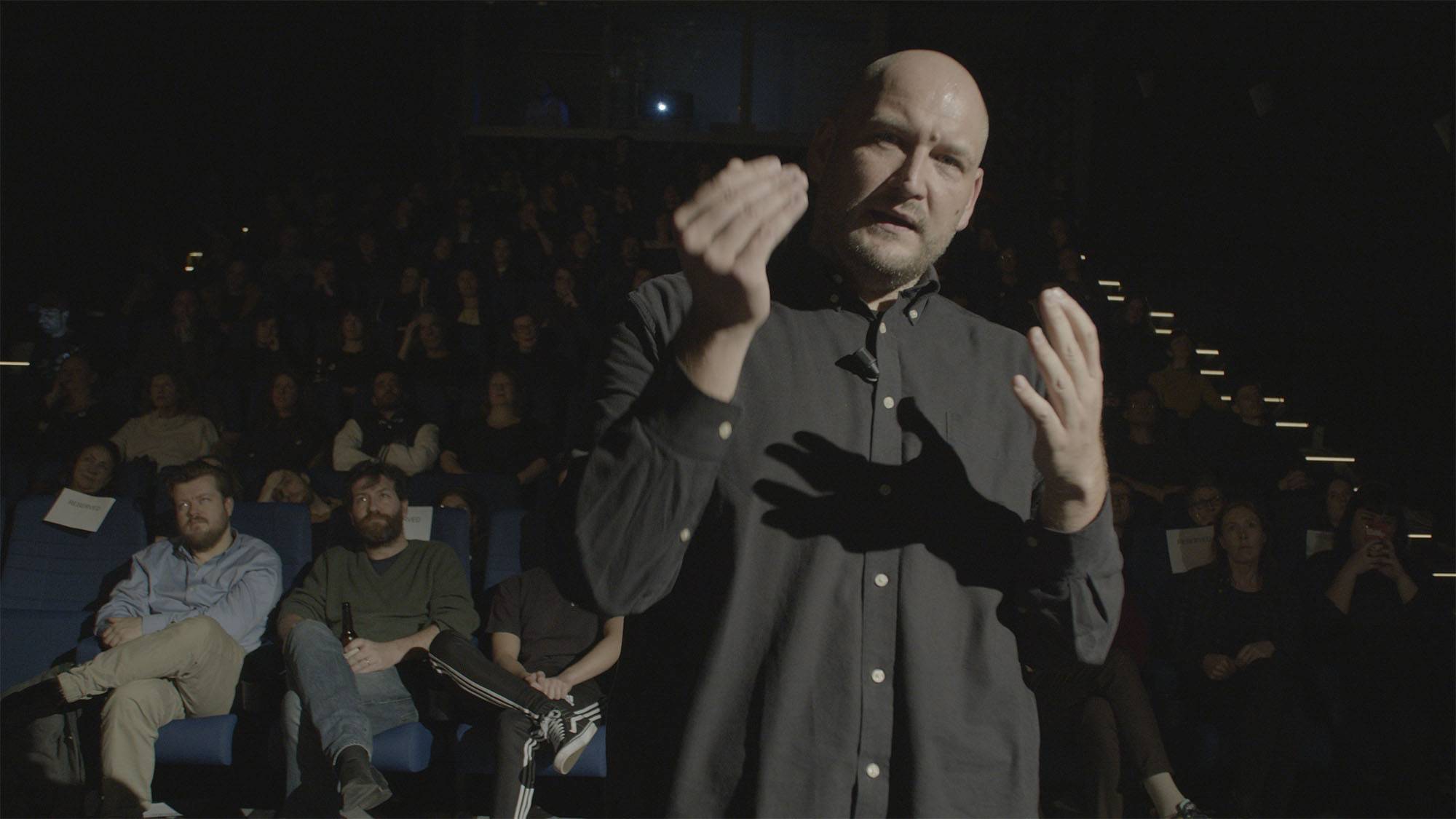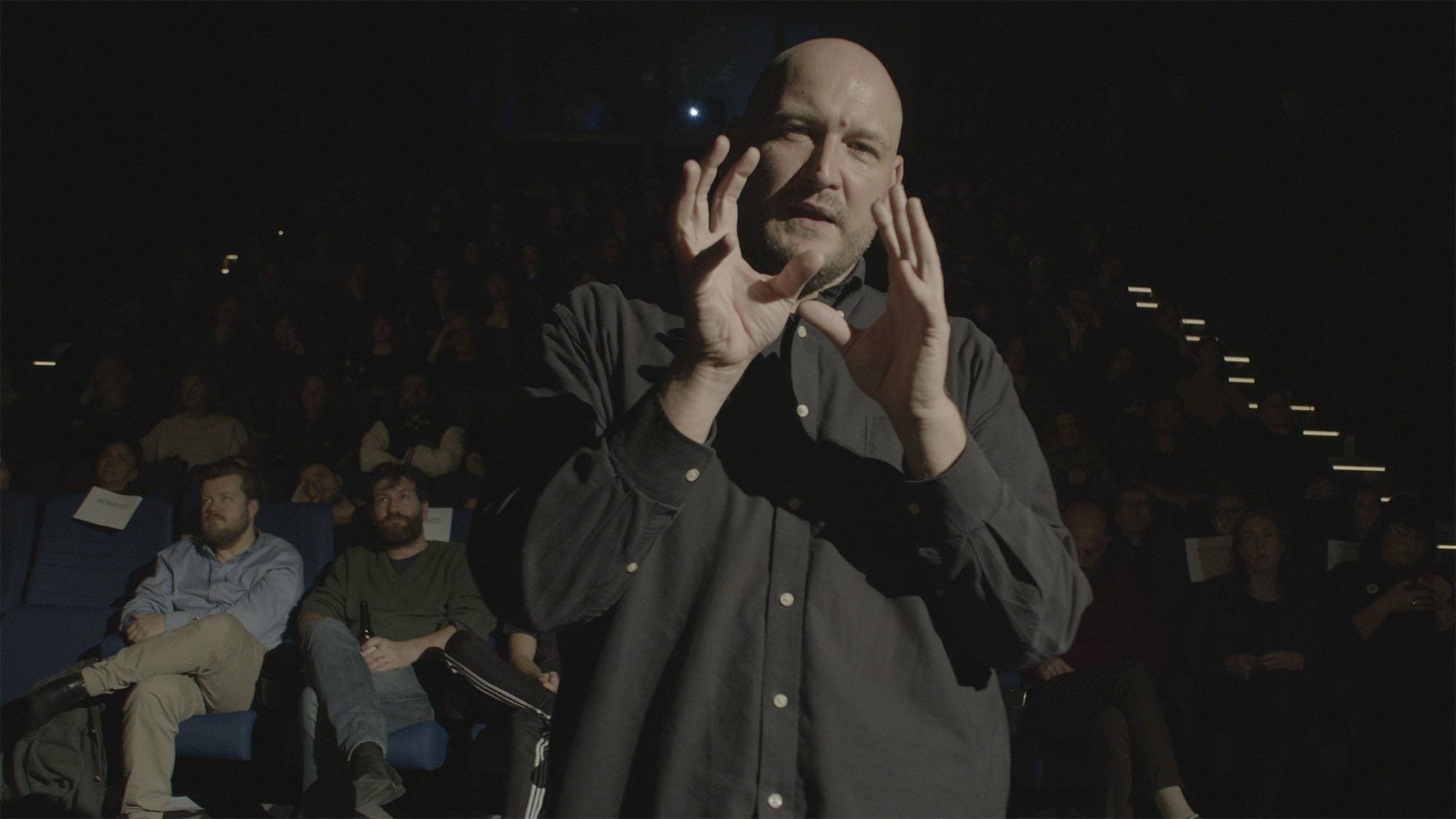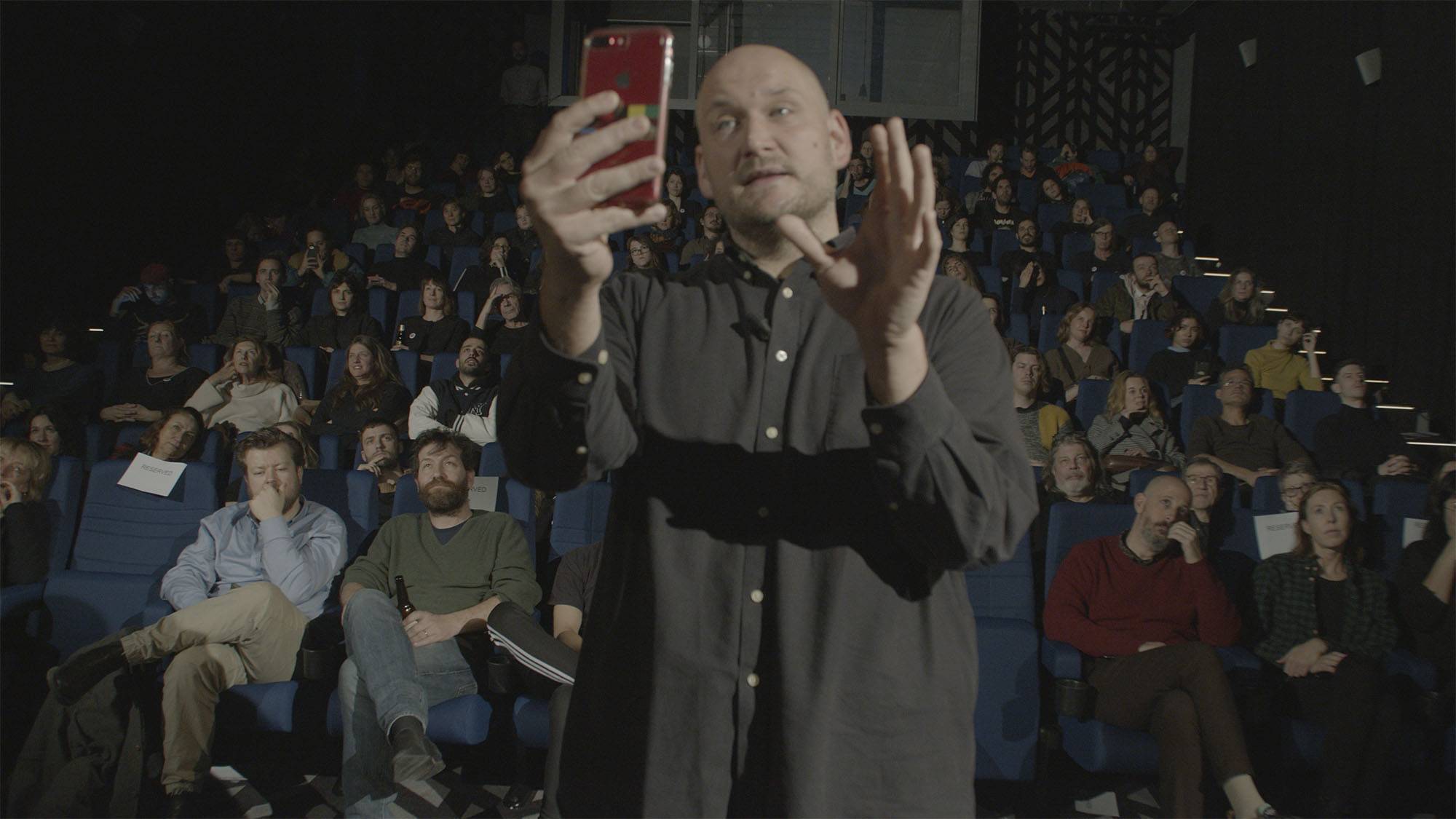![[FileSize] => 173196 [FileType] => 2 [MimeType] => image/jpeg [SectionsFound] =>](https://phd.emilezile.com/media/pages/performer-audience-lens/cc55a92c99-1655269185/a016-01072119-c001-braw-21-35-34-11-still004-q70.jpg)
![[FileSize] => 165184 [FileType] => 2 [MimeType] => image/jpeg [SectionsFound] =>](https://phd.emilezile.com/media/pages/performer-audience-lens/81ae8d3038-1655269185/a016-01072119-c001-braw-21-35-48-24-still003-q70.jpg)
![[FileSize] => 222904 [FileType] => 2 [MimeType] => image/jpeg [SectionsFound] =>](https://phd.emilezile.com/media/pages/performer-audience-lens/2f6db4dc66-1655269185/a016-01072119-c001-braw-21-34-19-23-still002-q70.jpg)



Performer/Audience/Lens
CHAPTER EXCERPT
Dan Graham would revisit his historical artworks throughout his career, often returning to past projects and reconfiguring them for new audiences. Multiple versions of Audience/Performer/Mirror have been performed in multiple locations with slightly different aspects and qualities. For clarity and consistency, the version I am referencing in this dissertation is the first video recorded instance, performed in 1977 at De Appel Amsterdam (Graham 1979, 88).
The performance Audience/Performer/Mirror consists of the artist Dan Graham entering a performance space, facing the audience in front of a large mirror, and delivering a series of verbal phenomenological observations to the audience. Firstly, he talks of his own body, his hands, his micro-gestures, the feeling of being inside his body; verbalising the biochemical rhythms and sensations he is experiencing within a sensory field of corporeality. By activating a zone of perception and communication between the audience and the artist, Graham produces a moment of intersubjectivity, a zone of shared use of language and affect. Intersubjectivity can be described within phenomenological sociology as referring ‘to the mutual constitution of social relationships’ (Marshall 2009, Para. 1).
We see this sense of a shared interpersonal universe emerge in the time-space Graham creates in his performance. A delicate relationship is established between performer and audience, navigated by spoken narrative. Within Graham’s performance there is a linguistic play between the experience of the lived body and its function as a social body, the body in relation to other people. Speaking on his role of performer in Audience/Performer/Mirror in an interview, Graham states: ‘I didn’t want to use myself as a performer. I was interested in the spectator.’ (Graham 2017)Graham foregrounds the thin but important and ever-present layer of social scaffolding used to orient oneself in society.
Graham’s monologue turns from self-analysis to directly addressing the audience. Facing the audience with intent, he begins verbally analysing their behaviour and their movements. He describes their reactions in real time, their squirming torsos, their suppressed laughter and subtle seat-shifting movements. An active dialogue develops between Graham and the audience as he describes their movements. They become more aware of their movements, in anticipation of Graham isolating them from the crowd and describing their actions. In the third and fourth phase of the performance, Graham faces a mirror that was installed behind him at the commencement of the performance (his back is turned to the audience). He continues to describe the actions of himself and the audience, this time through a refracted experience of the present, a mirroring. He uses the reflective surface as an apparatus to both view and project an image of the audience back onto themselves.
///
American curator Robert Blackson, in his essay Once More … With Feeling: Reenactment in Contemporary Art and Culture, identifies four strategies for artistic engagement with the past, namely Simulation, Repetition, Reproduction and Reeneactment. He cites re-enactment as a zone for compelling re-engagement with the past, defining its importance as being ‘distinctive in that it invites transformation through memory, theory and history’ (Blackson 2007, n.p). It is the quality of an embodied remix technique that attracts me to re-performance, allowing my body to be used as a vessel that carries the past performance and allows it to be re-presented, with new modifications and responding to unexpected, updated contexts.
Performance theorist Philip Auslander argues that the live event is now intimately fused with its mediated presentation, arguing that these two ways of being are now inseparable and allow for a re-enactment impulse that allows for a remix of the live event’s inherent media qualities. As he puts it, ‘[T]he apparatus of reproduction and its attendant phenomenology are inscribed within our experience of the live’ (Auslander 2005, 39). By taking mediated reality and its immediate reproduction as a given, the artist has a broad historical realm from which to access for comment. In the case of Ono – a highly mediated and photographed persona – who has been in the popular spotlight of the media for over 70 years, there is a breadth of content to work from when making a hybrid media portrait of the subject. By commenting on and engaging with the mediated reproduction of reality, an artist is afforded scope to reference multiple time periods through the frame of a living body. Using performative remix and archival performance, I was able to utilise the mediated reflections of the subject to offer a new reading rather than engage with the subject herself, directly. Arguably, the mediated reflections are more expressive than the subject itself.